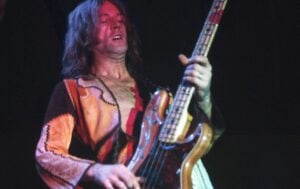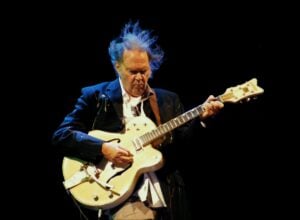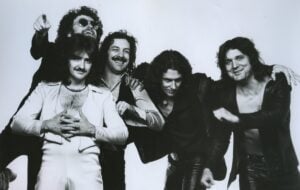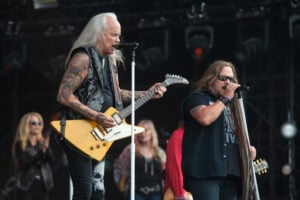15 Classic Rock Songs So Iconic One Note Is Enough To Recognize Them
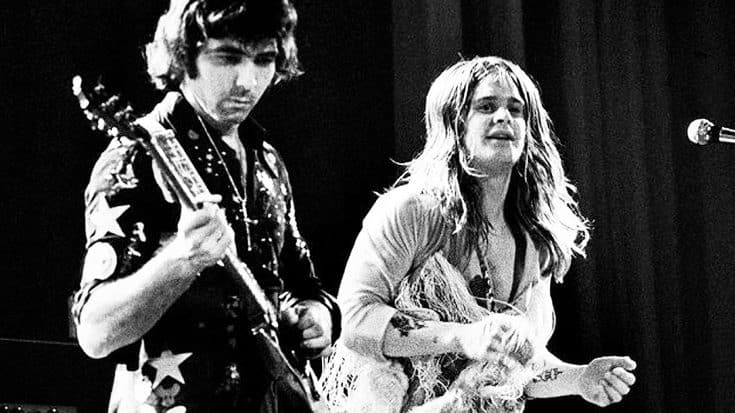
Image via The New York Times
Although rock and metal had their origins in previous decades, they really took off in the 1970s, producing some of the most well-known and significant songs in history.
What keeps these songs relevant throughout time? The memorable openings are equally as important as the memorable lyrics, appealing melodies, or avant-garde instruments.
Even casual listeners can identify the music from the first few notes, even if they can’t recall the rest of the song. These fifteen tunes all have one thing in common, whether it’s a lovely acoustic opener, a fantastic guitar riff, or something else entirely: they grab your attention right away.
Black Sabbath, “Paranoid” (1970)
“Paranoid” opens with one of the most recognizable guitar riffs of its era, laying the groundwork for the birth of heavy metal. This song is essential for any beginning guitarist to learn because of Tony Iommi’s straightforward yet memorable riff, Ozzy Osbourne’s frenzied vocals, and a powerful rhythm section.
Mountain, “Mississippi Queen” (1970)
It’s simple to understand why “Mississippi Queen” is Mountain’s biggest hit. A unique cowbell beat and gritty guitar chords open the song, which soon bursts into a frantic medley of jagged riffs and rough-edged vocals. From beginning to end, it is an authentic Southern rock classic.
Derek and the Dominos, “Layla” (1971)
Inspired by Eric Clapton’s unfulfilled love for Patti Boyd, “Layla” immediately captures your attention with its catchy tune. Clapton’s unvarnished, emotive voice and the recurring riff heighten the song’s poignant sadness. (I suppose the emotional upheaval paid off for him because Boyd subsequently left her husband, George Harrison, for Clapton.)
Jethro Tull, “Aqualung” (1971)
Martin Barre’s harsh six-note guitar riff opens “Aqualung,” establishing the mood for an eerie yet engrossing song. It goes well with the song’s gloomy themes and Ian Anderson’s gruff voice. From an album that signaled Jethro Tull’s transition from blues rock to their signature folk/prog rock sound, this opener is a gem.
Led Zeppelin, “Stairway to Heaven” (1971)
It is the obvious choice, to be sure, but it is well-deserved. John Paul Jones’ recorders combined with Jimmy Page’s elegant acoustic introduction create a masterpiece of elegance and beauty. It’s one of those understated yet impactful rock beginnings from the 1970s. Like “Paranoid,” it’s a riff that every budding guitarist needs to learn.
The Who, “Behind Blue Eyes” (1971)
“Behind Blue Eyes” is among Who’s Next’s most energetic and emotionally unvarnished tracks, and that says a lot. You are drawn in by Pete Townshend’s subtle acoustic arpeggios, and the harmonies are a magical addition. It is memorable due to the contrast between its gentleness and the band’s trademark powerful sound. (Let’s also agree to put the Limp Bizkit cover out of our minds.)
Alice Cooper, “School’s Out” (1972)
“School’s Out” effectively conveys the wild, carefree atmosphere of freedom and excess with its piercing, rebellious notes. The lively instrumentals and loud vocals only spark the party atmosphere. It’s simple to figure out why Alice Cooper rose to popularity in the glam rock and proto-punk movements.
Deep Purple, “Smoke on the Water” (1972)
With one of the most recognizable power chord riffs in rock history, “Smoke on the Water” opens, inspired by a ferocious Frank Zappa performance. The way it consistently reminds you of how incredible it is while bursting through the trippy and heavy metal feelings only serves to solidify its legendary reputation.
Aerosmith, “Dream On” (1973)
From the very first note, “Dream On” captures the ideal balance of youth, maturity, and unadulterated emotion. Steven Tyler’s impassioned cries, melancholic guitar riffs, and the eerie harpsichord combine to provide a distinctive and memorable sound that stays with you.
Lynyrd Skynyrd, “Free Bird” (1973)
“Free Bird” creates a melancholy atmosphere with its melancholy organ sounds and soft acoustic guitar opening. The song then becomes a timeless classic after being elevated to a new level by Gary Rossington’s renowned slide guitar solo, which turns it into a forceful anthem of release.
Pink Floyd, “Money” (1973)
The peculiar noises of Dark Side of the Moon’s “Money”—such as the startling rip of cash and the clink of registers—make it stand out. Roger Waters’ famous bassline, which floats through the song and gives it the hypnotic feel that makes “Money” unforgettable, is set up by these distinctive touches.
Fleetwood Mac, “Rhiannon” (1975)
“Rhiannon” from their self-titled 1975 album demonstrates why Lindsey Buckingham and Stevie Nicks were a natural fit for Fleetwood Mac. Nicks’ captivating tale and the eerie guitar riff create a captivating electric chemistry that is enhanced by the band’s outstanding musicianship.
Blue Öyster Cult, “Don’t Fear the Reaper” (1976)
“Don’t Fear the Reaper” opens with a frightening yet upbeat guitar intro, setting the mood for a song that is both unsettling and somehow reassuring. You’re immediately drawn in by the combination of gentle harmonies and a catchy cowbell rhythm, which created a vibe that stayed with listeners long before Christopher Walken revived it.
Eagles, “Hotel California” (1976)
The start of “Hotel California” is unquestionably fascinating, even though its meaning is still debatable. Eagles’ aura has endured for decades because of the suspenseful mood created by the soft acoustic playing and flowing rhythms.
Heart, “Barracuda” (1977)
“Barracuda” from their album Little Queen opens with the Wilson sisters’ strong, operatic vocals and ferocious guitar riffs. As the 1970s progressed, this song encapsulated their rock edge. Like a lot of outstanding beginnings from that period, it’s straightforward but bursting with personality and fire, making it hard for anyone to avoid being hooked.




















